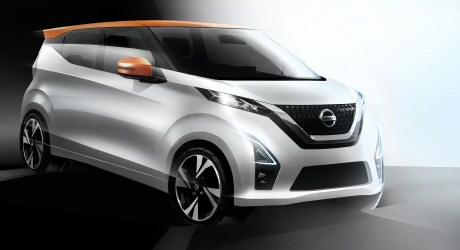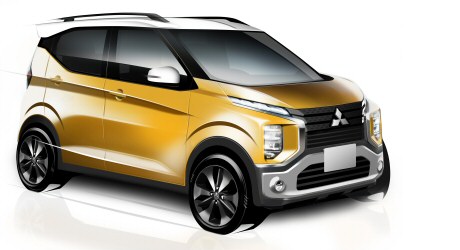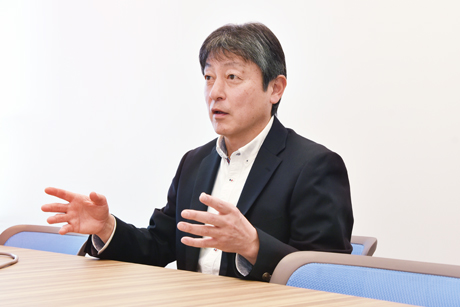Goal of NMKV product planning - satisfying Nissan, Mitsubishi, and customers
The product planning means to build the base concept for a new vehicle’s package as well as its “selling” points based on the target segment and customer needs. It also serves to determine the specification including the range of their grades, functions, and equipment, all of which are to be then handed down to three departments of manufacturing: the product development, production, and procurement-supply. In Nissan Motor and Mitsubishi Motors, such responsibility is shouldered by the personnel who assume the positions of CPS (Chief Product Specialist); each Nissan and Mitsubishi CPS is to work in NKMV as CPS, concurrently. One of the first tasks of those two CPSs is to review the respective roles of Kei-cars they play in each of Nissan and Mitsubishi automotive products and to clarify each target segment of customers. They will then discuss their go-to market strategy from the standpoint of CPS at NMKV.
Nissan aims at the mass market through its mighty distribution network composed of 2,000 sales points nationwide. Mitsubishi, on the other hand, has captured a solid fan base and takes a pride on its unique and distinctive position in the automobile industry. In light of these differences, the partnership makes consideration of the efficiency as car manufacturers, while each of Nissan and Mitsubishi continues to aspire for the Brand individuality of their Kei-cars. The most difficult part is share, while making difference to each other.
As the current first-generation model development aimed at the common segment of customers of both companies, there was an issue left unsolved - especially for Mitsubishi as it suffered a loss of “Mitsubishi-ness” from the model. In the development next second-generation models both parties agreed to aim for different customers, an ambitious challenge to secure each Brand’s identity. A request from Nissan remained unchanged. It focuses on a height (tall) wagon that could meet a variety of needs to properly respond to the mass market at a higher level. While a request from Mitsubishi was that they want to produce a SUV-ish model with distinctive features that embraces Mitsubishi heritage. NMKV sought a way to satisfy the request from Mitsubishi as much as possible, on the premise that the vehicle frame must be shared.


Design Sketches
“Spacious interior. Luggage space that promises user-friendly functionality. Smooth, snappy yet self-confident feel in driving. Easy urban driving. Fuel efficiency that satisfies expectation of customers as Kei-cars…they are all part of the fundamental offerings and target performance; we came to a conclusion that although the target segments of two companies are different to each other, the basic needs of customers remained the same”, says Tagawa CPS of Nissan/NMKV.
“By completing the fundamental packaging factors, newly developed platform, vehicle frames, and engines, we established the base for the second-generation model. We invented a variety of designs to define ‘Mitsubishi-ness’, which would cater for Mitsubishi customers; in the end, we were finally successful in putting together the product plan for an active Mitsubishi Kei-car”, says Yoshikawa CPS of Mitsubishi/NMKV.

Tagawa CPS, Nissan Motor/NMKV

Kikkawa CPS, Mitsubishi Motors/NMKV






